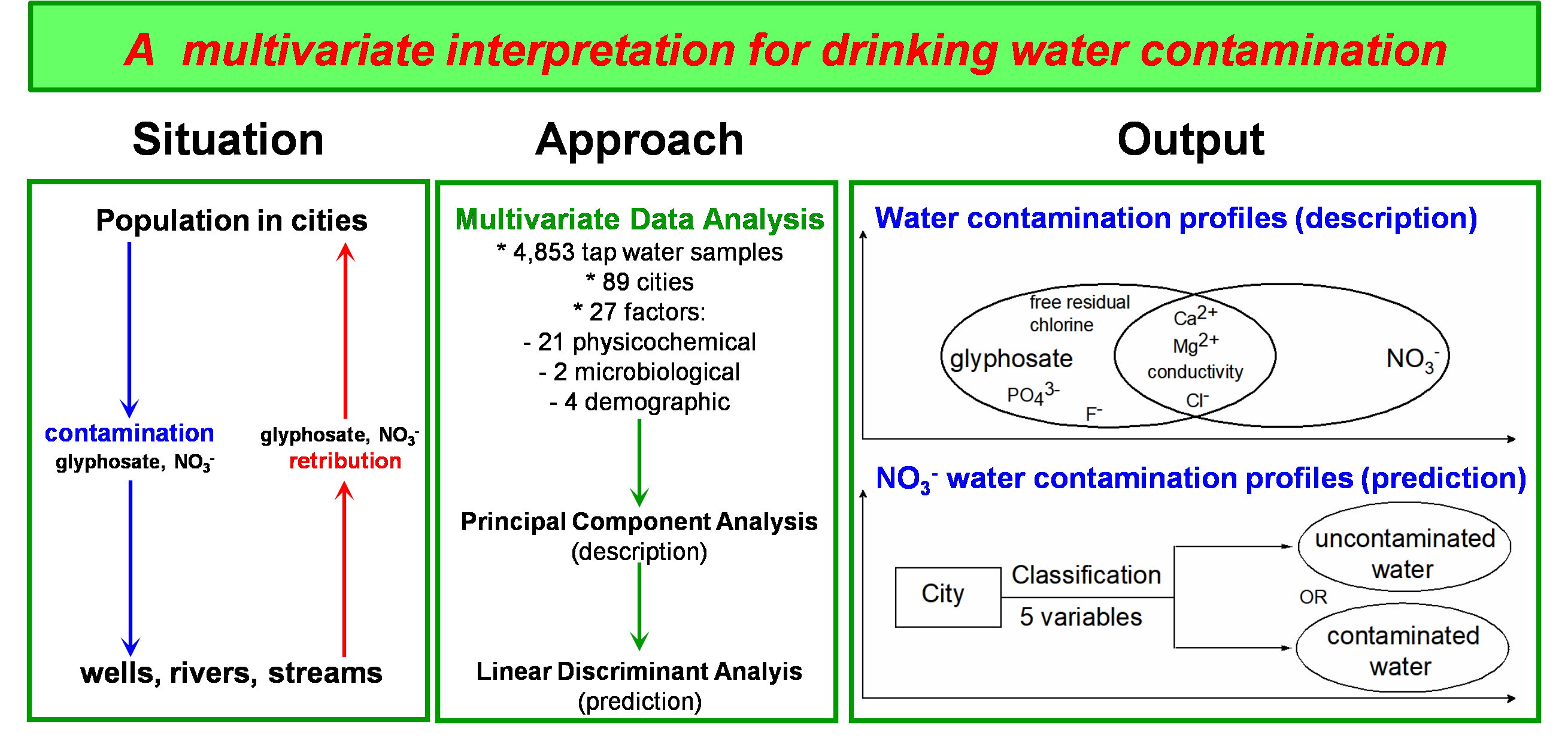Analysis of Factors Involving Drinking Water Contamination by Glyphosate and/or Nitrate in Urban Areas

- Linear discriminant analysis,
- Pattern recognition,
- Principal component analysis,
- Tap water contaminants,
- Water physicochemical profiles
Copyright (c) 2022 Orbital: The Electronic Journal of Chemistry

This work is licensed under a Creative Commons Attribution-NonCommercial-NoDerivatives 4.0 International License.
Abstract
This study investigated factors that could be related to drinking water contamination in urban areas in order to obtain quality profiles that characterized presence of the glyphosate and nitrate contaminants. Thus, in a period of one year, 4,853 tap water samples from 89 cities in the northeastern region of the State of São Paulo, Brazil, were analyzed in 21 physicochemical and 2 microbiological parameters. Additionally, 4 demographic variables were also included in multivariate data analysis. Principal Component Analysis of physicochemical and microbiological data showed that glyphosate concentration is positively correlated with nitrate concentration, especially in cities that make exclusive use of groundwater, besides correlating with conductivity and with concentrations of calcium, magnesium, fluoride, chloride, phosphate and free residual chlorine. The inclusion of demographic variables in Principal Component Analysis did not significantly change waters physicochemical profiles, but in cities that exclusive use groundwater for public supply the number of hospitalizations for diarrhea correlated positively with glyphosate, nitrate and chloride concentrations, in addition to conductivity. Linear Discriminant Analysis models involving 5 variables (conductivity and concentrations of calcium, magnesium, chloride and nitrate) were able to predict the cities vulnerability to groundwater contamination by nitrate.





